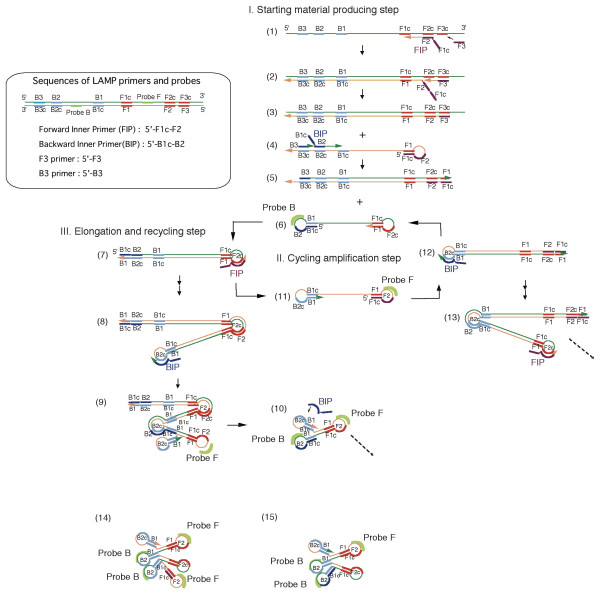Figure 1.

Pattern diagram of LAMP reaction and hybridization of fluorescently labeled oligo DNA probes. The LAMP reaction takes place in three steps (starting material production step, cycling amplification step, and elongation and recycling step) by the primers depicted in the enclosure. In the starting material production step, the starting material (6) is generated by primers (forward inner primer (FIP) and backward inner primer (BIP)). A complementary strand (11) of the starting material (6) is synthesized from the starting material (6) by a reaction that uses itself as a template and by a reaction from an FIP annealed to the loop segment, thus making up the cycle amplification step. During this step, probes (probe F and probe B, respectively) designed for the region between the F1 and F2 region or the B1 and B2 region can hybridize to the loop segment. As the cycle reaction progresses, an elongation and recycling step takes place, during which elongated products (8, 13, etc.) with an inverted repeat structure are generated. Numbers 14 and 15, which have a cauliflower structure, are also generated. They have many loop structures to which probes can hybridize.
